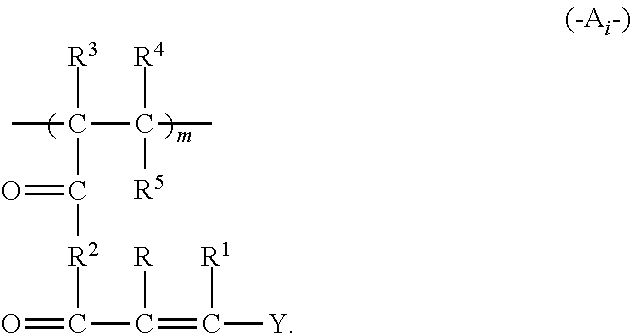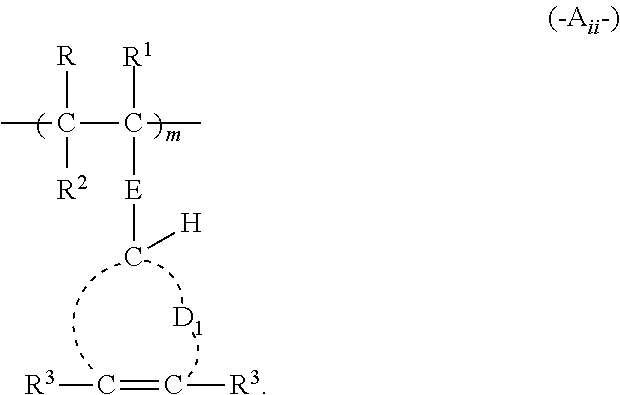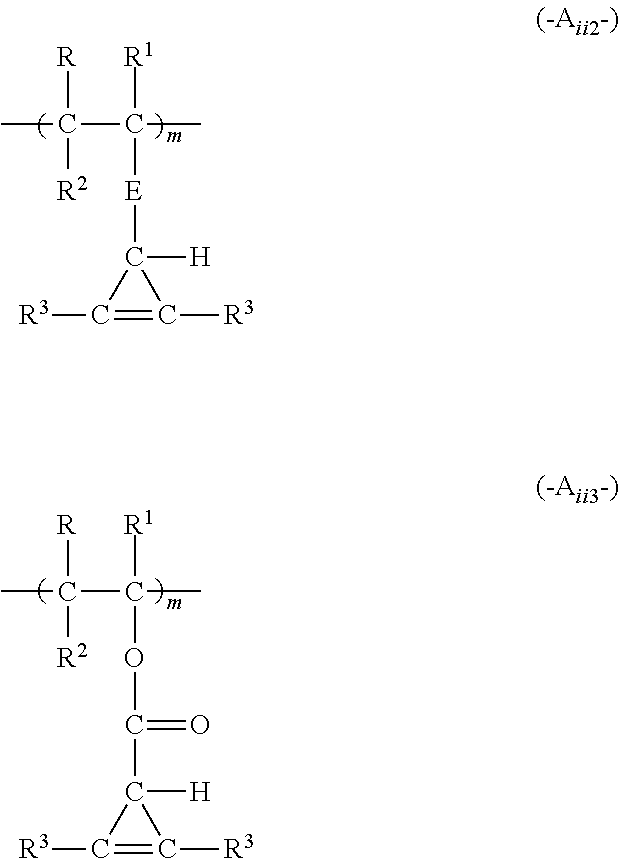Articles having electrically-conductive layer or pattern
a technology of electrically conductive layers and patterns, applied in the direction of instruments, non-metal conductors, conductors, etc., can solve the problems of requiring a conductive substrate for the polymerization process, exhibiting durability or compatibility with other materials required for making such devices, and difficult flexible roll-to-roll coating and manufacturing operations, etc., to achieve improved selectivity for forming, improved catalytic properties of crosslinked polymers, and high durability
- Summary
- Abstract
- Description
- Claims
- Application Information
AI Technical Summary
Benefits of technology
Problems solved by technology
Method used
Image
Examples
invention example 1
ically-Conductive Product Articles from Uniformly Coated Precursor Articles
[0332]A photocurable composition containing either 10 weight % of water-soluble Polymer A or 9.3 weight % of water-soluble Polymer D and 0.05 weight % of Dow Tergitol™ 15-S-9 surfactant (Dow Chemical) was filtered with a 1 μm syringe filter and spin coated at 1500 RPM onto PET, poly(ethylene terephthalate) film with a polymeric adhesion layer of a copolymer derived from glycidyl methacrylate and butyl acrylate.
[0333]The resulting precursor articles were exposed to 350 nm to 450 nm ultraviolet light through a chrome-on-quartz contact mask for 15 seconds (water-soluble reactive Polymer A and 60 seconds (water-soluble reactive Polymer D) then each was heated to 60° C. for 60 seconds. Each of the imagewise exposed and heated articles was then immersed in well agitated distilled water for 2 minutes to remove the water-soluble reactive polymer from the non-crosslinked regions from the PET substrate. All but one of ...
invention example 2
ically-Conductive Product Articles from Ink Jet Printed Precursor Articles
[0337]Photocurable compositions comprising either 4 weight % of water-soluble reactive Polymer A, B, or C, 10 weight % of ethylene glycol, and 0.5 weight % of Tergitol® 15-S-9 surfactant (Dow Chemical) were prepared and each was filtered with a 1 um disk filter. Each filtered photocurable composition was then loaded as an “ink” into an ink cartridge designed for a consumer inkjet printer with a thermal ink jet print head. Each of these inks was printed onto a PET substrate that has been pre-coated as described for Invention Example 1 to form a pattern of the photocurable composition in a precursor article. Each pattern in the precursor articles was composed of interleaved 0.5 mm lines connected to a probe pad. Each precursor article was allowed to air dry and then exposed to 350 nm to 450 nm ultraviolet light for 120 seconds to thoroughly crosslink the patterns of water-soluble reactive polymers in the ink jet...
PUM
| Property | Measurement | Unit |
|---|---|---|
| transmittance | aaaaa | aaaaa |
| weight % | aaaaa | aaaaa |
| wavelength | aaaaa | aaaaa |
Abstract
Description
Claims
Application Information
 Login to View More
Login to View More - R&D
- Intellectual Property
- Life Sciences
- Materials
- Tech Scout
- Unparalleled Data Quality
- Higher Quality Content
- 60% Fewer Hallucinations
Browse by: Latest US Patents, China's latest patents, Technical Efficacy Thesaurus, Application Domain, Technology Topic, Popular Technical Reports.
© 2025 PatSnap. All rights reserved.Legal|Privacy policy|Modern Slavery Act Transparency Statement|Sitemap|About US| Contact US: help@patsnap.com



